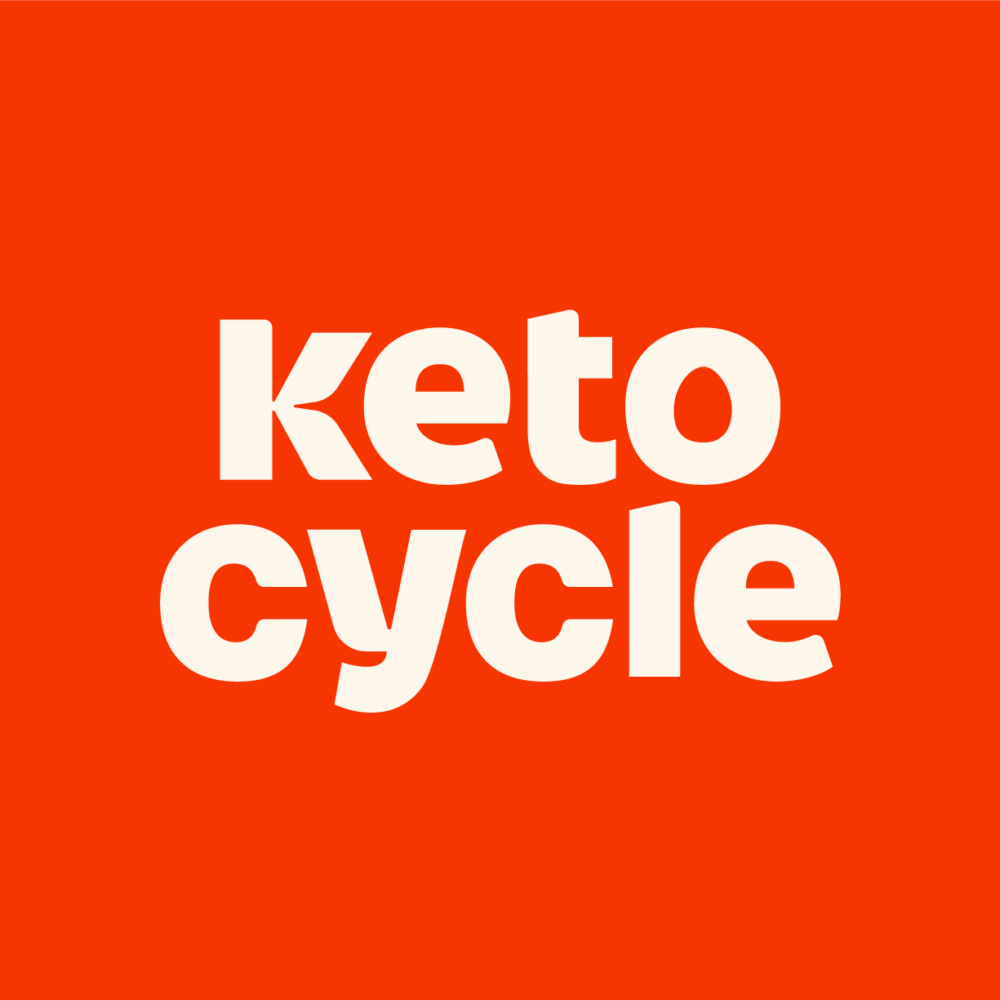Keto Diet: How Does It Work?

The ketogenic diet is a popular weight-loss method. It requires you to eat a low-carb, high-fat diet to move your body into the metabolic state of ketosis. The diet is designed to help you burn body fat.
The keto diet has many health benefits, including better heart health, clearer skin, and improved blood sugar control, along with helping people lose weight. However, this popular diet may also have some drawbacks and may not be suitable for everyone.
In this article, we’re going to take a look at what the keto diet is, how it works, and how it can benefit you and your health. Take a look now to learn more.
What Is the Keto Diet?
The ketogenic diet is a low-carb diet that requires you to reduce carbohydrate intake to around 5% of your daily calorie intake. The diet is similar to other low-carb diets, like the Atkins diet, but is considered a more restrictive low-carbohydrate diet.
On the keto diet, you should aim to eat as many high-fat foods as possible while limiting foods with high net carbs. Good high-fat foods include avocados, olive oil, and eggs. Limiting your intake of trans fat and saturated fat while increasing the healthy fats you consume is essential.
High-fat diets, like the keto diet, come with many benefits for your health and help you reduce body fat percentage. Contrary to the previous discourse surrounding fat, the keto diet champions the health benefits of healthy fats.
If you’re interested in trying the keto diet, you may want to take a look at a keto diet app, like Keto Cycle. This app helps you plan your meals and lose weight on the keto diet and is the perfect choice for beginners.
It offers more than 1,000 keto-friendly recipes, which can be customized to your dietary requirements and provide a space for meal planning and food tracking to keep you motivated on the ketogenic diet.
You’ll get daily weight loss tips and be able to engage with the community of others on the keto diet to get support when you need it. The app also offers keto-friendly workouts for all abilities for you to follow along with.
What is ketosis?
Ketosis is a metabolic state in which the body burns stored fat for fuel rather than blood sugar. You can achieve it through prolonged fasting or eating a low-carb diet, like the ketogenic diet.
Ketosis is a natural state in the body. The ketogenic diet aims to make the conditions right within your body to ensure you remain in ketosis all the time. This means eating foods with low net carbs to reduce the blood sugar your body could use for fuel.
What is keto flu?
Keto flu is a group of symptoms attributed to the beginning of the keto diet. Symptoms include headache, foggy brain, fatigue, irritability, nausea, difficulty sleeping, and constipation. You usually notice them 2–7 days after beginning the diet.
No formal medical authority recognizes the illness, but it is frequently reported as a side effect of trying different low-carb diets.
How Keto Works: Our Medical Team Explains
The ketogenic diet works by inducing a state of ketosis in the body. By eating fewer carbohydrates, you limit your body’s blood sugar levels and cut off the usual fuel source. This means the body looks elsewhere, in this case to fats, for energy.
By inducing a state of ketosis in the body, you reduce the amount of body fat you have and therefore reduce your overall body weight.
How many carbs a day on keto?
You should limit your carb intake to just 5% of your daily caloric intake on the keto diet. This can vary depending on each individual, but most recommendations state that you should consume less than 50g of carbohydrates daily.
On the keto diet, it is essential that you increase your fat intake as well as ensure your protein intake is moderate. Your protein limit should be around 10–20% of your daily caloric intake, which translates to about 75g per day.
Is Keto Bad for You?
The ketogenic diet is considered safe for most people, but it has some drawbacks. To begin with, the high-fat diet may be a concern for long-term heart health, especially if keto dieters are eating lots of saturated fats. If you follow the ketogenic diet, you must eat more healthy, unsaturated fats, such as vegetable oils, seeds, nuts, and fatty fish.
There are also some groups of people who should avoid the keto diet. These people include:
- Those with conditions affecting the kidneys, including chronic kidney disease
- Those with an eating disorder or a history of disordered eating patterns
- People who are pregnant or breastfeeding
- Children and teens
Those with diabetes should also speak with a doctor before trying any of the keto diets to ensure they understand any of the risks.
How to Do the Keto Diet
The ketogenic diet requires you to limit your carb intake, moderate protein intake, and increase fat intake. The best way to do this is to track your food intake daily to ensure you eat the correct amount of each macronutrient.
The keto pyramid can help you work out the way you should divide up your plate. It suggests your intake should be 5–10% carbohydrates, 25–30% protein, and 70–80% fat.
On the keto diet, you should also:
- Drink enough water to keep yourself properly hydrated
- Keep your electrolytes in balance
- Exercise regularly, like a daily walk, to increase your calorie deficit
- Track your calories and your macros
- Control your portion size
There are many keto-friendly recipes online to try out, or you could look at a keto diet app, like the Keto Cycle app, to get some keto diet inspiration.
5 Keto Diet Benefits You Should Know About
Though low-fat diets have been championed as the healthier alternative for years, a high-fat diet can actually have a ton of benefits for your health. We’ve summarized some of the health benefits of the ketogenic diet below.
#1 Excellent for weight loss
The ketogenic diet is an excellent weight-loss method. It is known to help people reduce their body fat as well as their overall body weight.
Eating a very low carbohydrate diet helps boost fat loss by moving the body into the metabolic state of ketosis, which forces the body to burn fat for fuel, increasing fat metabolism and helping you lose weight.
#2 Improves brain function
The brain uses glucose to perform its day-to-day functions but can also use a fuel source called ketones. Ketone bodies are produced when you eat low-carb diets, which have many benefits for brain function.
The ketogenic diet was initially designed to treat children with epilepsy who did not respond to medication. Eating a low-carb intake increased the ketones in the brain, which helped treat their epilepsy and reduce seizure frequency.
Additionally, the ketogenic diet is thought to have some benefits for neurodegeneration and is currently being researched for its benefits for Alzheimer’s disease and Parkinson’s disease.
#3 Balances blood sugar
The ketogenic diet is recommended for those with type 2 diabetes as it helps users balance their blood sugar and lower insulin levels. Evidence suggests that those with diabetes may help their diabetes with the ketogenic diet.
Anyone with diabetes considering trying the ketogenic diet should speak with a doctor beforehand to discuss medication changes and any risks they may encounter.
#4 Clears the skin
Ketogenic diets reduce glucose in the diet and increase the consumption of healthy fats. This helps reduce inflammation and oxidative stress in the body, which can contribute to breakouts of acne and other inflammatory skin conditions.
#5 Good for heart health
Ketogenic diets are thought to be a good way of boosting heart health. They are thought to reduce blood pressure and LDL cholesterol levels as well as reduce your risk of developing heart disease.
Low carb diets are thought to be a suitable method of reducing blood pressure. High blood pressure can contribute to various chronic illnesses, including heart disease, cardiovascular disease, and stroke.
In addition, high levels of LDL cholesterol, also known as the bad kind of cholesterol, have been linked to poorer overall heart health and obesity.

Advertisement
A ketogenic diet app designed to make keto easy. From the start.
- Personalized meal plans & workouts
- 10,000 keto recipes + vegetarian-friendly recipe database
- Customizable grocery list
- Calorie tracker
- Keto education and overviews of current trends
4 Possible Side Effects of the Keto Diet
As with any kind of weight-loss method, the ketogenic diet does come with some possible side effects. We’ve taken a look at some of them below.
#1 Vitamin deficiency
Vitamin and mineral deficiencies are common side effects of the ketogenic diet because of the reduction in fruits and vegetables in the diet. You may eat low-carb veggies, but many starchy vegetables are cut out.
This can lead to you not getting all the vitamins and minerals your body needs to keep it healthy.
#2 Frequent urination
Usually, only a significant problem when you start the keto diet; frequent urination is a common side effect. As you reduce your body’s intake of carbs, glycogen, the stored form of carbs, is burned. These stores contain water that needs to be released by the body.
#3 Constipation or diarrhea
The ketogenic diet is known to cause changes in the digestive tract, leading to side effects like diarrhea and constipation. As you eat more fat, your digestive system may struggle to keep up, leading to these gastrointestinal side effects.
You could counteract this by supplementing with fiber or drinking more water.
#4 Sleep issues
Insomnia and other sleep issues are common on the keto diet. These side effects are usually attributed to higher energy levels and lower levels of the hormones serotonin and melatonin.
Most sleep problems tend to dissipate as the body readjusts to the keto diet; in fact, many users of the keto diet have self-reported deeper and better sleep when on the keto diet.
Foods to Eat on Keto
The ketogenic diet can sometimes feel restrictive, but you can actually eat quite a variety of foods on the diet. Though you need to limit your carbohydrate intake, there are actually a number of different food groups you can consume lots of.
Foods to eat include:
- Animal proteins, like fish and other seafood, poultry, red meat, and eggs
- Dairy products, like cheese, Greek yogurt, milk, butter, and cream
- Low-carb vegetables, like dark leafy greens, peppers, and summer squash
- High-fat vegetables, like avocados and olives
- Non-starchy veggies, like cauliflower, broccoli, eggplant, and celery
- Some nuts and seeds, including pecans, chia seeds, and macadamia nuts
- Some fruits, like avocados, blackberries, rhubarb, and raspberries
- Fats and oils, like ghee and olive oil
Foods to Avoid on Keto
Foods to avoid on keto include foods high in saturated fat, sugary foods, overly processed foods, junk foods, and takeout foods. Foods of this kind to avoid include takeout pizza, ice cream, pasta, and potato chips. Eating clean when on the keto diet is best, and avoiding food that could move you out of ketosis.
You should also avoid starchy vegetables, fruits with lots of sugar, and any other foods with very high carbohydrate contents. Fruit and vegetables to avoid include peas, butternut squash, parsnips, apples, pears, and bananas.
You should also make sure not to eat too much protein.
Look for food with a low net carb value (net carbs = total carbs minus fiber) and a clean label.
Best Keto Snacks
The best keto snacks to eat will have a high-fat content and a low carbohydrate content. You could try savory snacks like cheese cubes, a handful of olives, lightly seasoned avocados, or macadamia nuts. You could also try animal protein sources like pepperoni snacks, hard-boiled eggs, or salmon. You could pair these with low-carb vegetables too.
For a sweeter snack, you could try keto-friendly berries, like blackberries and raspberries, paired with Greek yogurt or heavy cream. You could also have small quantities of dark chocolate.
Low-carb vegetables, like celery, collard greens, spinach, and kale make for good snacks on the keto diet. Though they don’t have a high-fat content, they are low in carbohydrates and packed full of nutrients that are crucial for your health.
FAQs
The ketogenic diet is a well-known and effective method of weight loss. It has been shown to help reduce excess fat in the body and overall weight by pushing the body to burn more fat in place of blood sugar.
There are many kinds of keto diets, and clean keto is one of them. Clean keto means eating ‘clean’ foods that are nutrient-dense and of high quality. This means making homemade foods and avoiding additives and processed foods.
There are a few ways you can tell that you’re in ketosis. These include feeling more alert and focused, losing weight quickly, and your breath taking on a fruity smell.
The keto diet is considered safe for most people, provided that you follow the guidelines accurately and get all the nutrients your body needs each day for it to function properly. Some people who should avoid the keto diet include people who have kidney damage, people who are pregnant or breastfeeding, and people with type 1 diabetes.
A Word From Our Nutritionist
The ketogenic diet is a popular weight-loss method involving eating a high-fat, low-carb, moderate-protein diet to induce a state of ketosis in the body. Ketosis is when the body burns fat for fuel rather than blood sugar, helping you lose weight.
Eating the keto way is known for its many health benefits, including increased weight loss, better focus, improved heart health, and may reduce symptoms of polycystic ovary syndrome.
Some side effects of the keto diet include nutrient deficiencies, sleep issues, gastrointestinal problems, and keto flu. Most of these side effects will dissipate after the first few weeks of the diet.
The keto diet is considered safe for most people but should not be tried by those with kidney problems, those who are pregnant or breastfeeding, those with a history of eating disorders, and anyone under the age of 18.
Conclusion
The ketogenic diet is a weight loss method that involves increasing your fat intake while reducing your carbohydrate intake. It is an effective way to reduce weight and boost your overall health.
After years of the low-fat diet being favored, the idea of eating more fat may be difficult to contend with, but the research backs up this kind of diet, with much evidence showing its benefits.
If you’re thinking of trying out the keto diet but don’t know where to start, why not try out a keto app, like Keto Cycle, to help you stay motivated. The app can provide a space for you to track your macro intake and your progress, and also offers you a huge number of keto-friendly recipes to try out.







Comments (0)